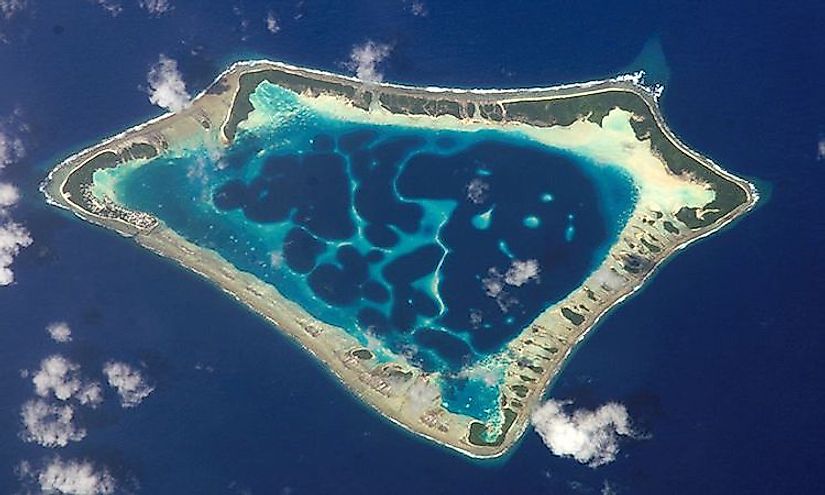Coastal And Oceanic Landforms: What Is An Atoll?

What Is An Atoll?
An atoll is a ring-shaped coral reef or series of coral rims that encircle a lagoon either partially or wholly. Atoll and lagoons form a rim around an island that offers protection to the central island. The corals of the atoll sit on top of the rim of an extinct volcano called seamounts which have eroded beneath the waters. The lagoon is formed over the volcanic crater with the higher rim remaining above the water permitting the coral to grow and form a reef. A slow rate of continued erosions that allow the reef to grow outward and upward is necessary for the atoll to persist. An atoll can also be described as annular reef enclosing a lagoon with no promontories other than reefs. The word atoll is derived from an Indo-Aryan language which means “an administrative subdivision.”
Formation Of An Atoll
An atoll, just like other tropical island types including high volcanic islands and reef islands, is formed from the gradual subsiding of an oceanic volcano. The volcano erupts piling up lava on the floor of the sea. The continued eruption leads to the growth of seamount eventually penetrating the water surface with the top of the volcano forming the oceanic island. A fringing coral reef surrounding a volcanic island will develop upwards as the island subsides leading to a formation of a barrier reef or an atoll. The fringing reefs become barrier reefs since the outer parts maintain itself close to the sea level while the parts on the inside fall off. An atoll is formed as a result of the development of marine organism thus these islands are mainly located in warm tropical waters. Some theories suggest that an atoll is formed from islands worn away by erosion from the action of ocean waves and streams.
Distribution Of Atolls
Atolls are only found in the tropical and subtropical warm waters of the oceans and seas. Most of the world’s great atolls are located in the Pacific Ocean, especially in the islands of Tuamotu, Caroline, Marshall, and the Coral Sea. The Atlantic Ocean has mainly small eight atolls in the east of Nicaragua belonging to the Colombia’s Department of San Andreas and Providencia. The northernmost atolls of the world are referred to as the Kure Atoll and the atolls of the Northwestern Hawaiian Island while the southernmost atolls are the Elizabeth and Middleton Reefs in the Tasman Sea. Aranuka atoll is the closest to the equator. Atoll islands are mostly low-lying with an elevation of less than five meters. The largest atoll in the world by the land area is the Kiritimati covering an area of 321.4 square kilometers.
Importance Of Atolls
The sandy shores of atolls have played a major role in the history of man. However, the low-lying elevation has proved very dangerous for the ocean and sea users. Because several atolls are hidden by the ocean waves, ships have been stranded or even wrecked on the hidden atolls. Most of the atolls are uninhabited because they are located in remote areas and difficult to access them. Thus, most of the atolls have been used as testing sites for nuclear weapons by countries such as the US, Britain, and France. The first hydrogen bomb was tested at Bikini Atoll. Atolls are also attractive for tourists. The white sandy beaches are ideally suited for tourism.











